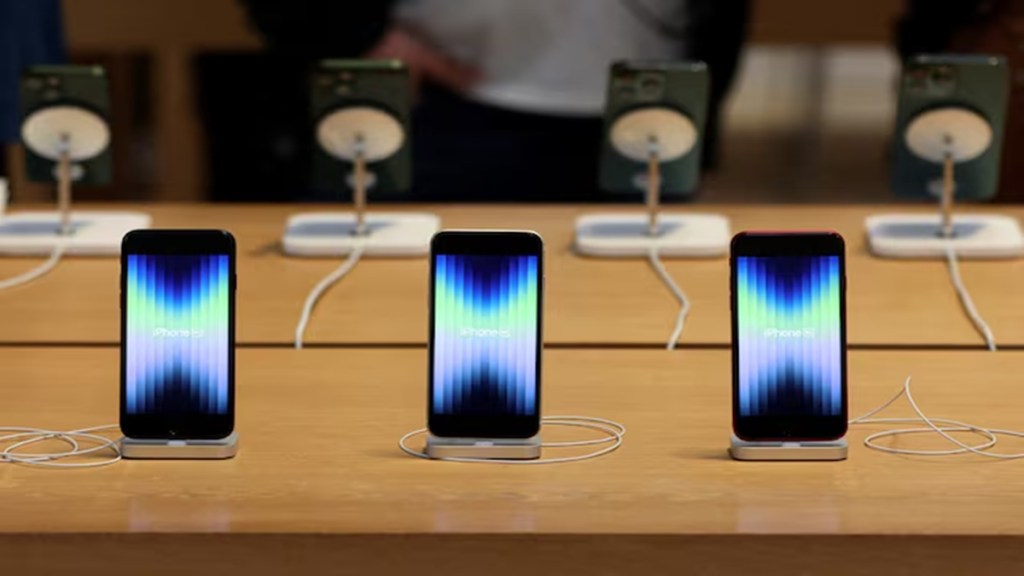As quick-commerce platforms accelerate their reach in groceries, fashion, and beauty categories, one segment continues to stand firm in the hands of traditional players — smartphones. Multi-brand retailers like Sangeetha Mobiles, Poorvika, and BigC are not just holding their ground, but actively adapting to rising customer expectations for faster delivery. These players are blending their extensive physical footprint, often spanning 400 to 600 stores, with a growing network of dark stores in key pin codes, enabling them to offer rapid, hyperlocal smartphone delivery, often within hours.
Despite the promise of rapid 10-minute delivery, brick-and-mortar mobile retailers, followed by e-commerce platforms, are managing to retain their dominance, especially in the crucial mid-range smartphone segment, by leveraging robust store networks, deeper inventory control, and flexible financing options.
Industry data indicates that offline retail still commands around 60% of the smartphone market in India, compared to 40% online. Quick-commerce, despite its rapid rise in other sectors, accounts for a meagre 1% of smartphone sales. And the reasons, according to analysts and retailers, are both structural and behavioural.
Unlike FMCG products, smartphones, particularly mid-range ones, are not repeat purchases and lack consistent, predictable demand. “Quick commerce thrives where demand is repetitive and easy to forecast week-on-week. That simply isn’t the case with smartphones,” said Satish Meena, founder of Datum Intelligence. “Buyers take their time, weigh their options, and often switch preferences late in the journey, making it a difficult model for q-commerce players to work with,” he added.
The unpredictability is most pronounced in the Rs 15,000–30,000 price range, which forms the lion’s share, nearly 50%, of the smartphone market. This segment is more complex to manage than either the sub-Rs 15,000 budget range (40%) or the premium segment above Rs 30,000 (10%). High SKU variety in terms of storage variants, colours, and specifications means that quick-commerce players face a “long-tail complexity” in inventory management, especially across distributed micro-warehouses or dark stores.
“Mid-range smartphones have a long tail. Customers are picky about colour, model, and specifications. The lifespan of new model launches is just six months, and unsold models quickly become obsolete due to rapid advancements in chipsets or camera tech,” said Subash Chandra L, managing director of Sangeetha Mobiles. “While traditional retailers like us can absorb some of this risk through local discounts and targeted promotions, quick commerce players bleed with idle inventory and wasted shelf space,” he said.
“Legacy retailers are structurally better equipped to manage the long-tail complexity of mid-range smartphones through their store networks, localised inventory strategies, and ability to move slow SKUs through financing and sales intervention,” said Meena.
Financing remains another critical barrier for q-commerce platforms. While quick-commerce operators typically run an inventory-light franchise model, they often lack partnerships with NBFCs for flexible EMI options, something that traditional retailers have integrated deeply into their sales processes.
“Around 50% of Sangeetha’s current sales are EMI-based. Even users without a formal credit history can avail EMI options in-store through partners like Bajaj Finserv,” added Chandra. “That’s something online platforms can’t offer easily, because they lack the infrastructure for in-person verification or walk-in support.”
This financing capability not only makes devices more affordable, especially in lower-income segments, but also drives volume sales in smaller cities and towns, markets that q-commerce hasn’t fully cracked yet.
The challenges have already begun to show. Swiggy Instamart and Blinkit, two of the most aggressive quick-commerce players, have retreated from premium offerings to instead list budget-friendly models like JioPhone and Nokia. “Quick commerce works better for new model launches where the customer has already made up their mind and is just waiting for stock,” Meena noted.
Additionally, traditional retailers continue to score high on after-sales services such as app installations, screen protector fittings, and initial setup support, offerings customers have grown to expect and which are absent in the quick-commerce model.

